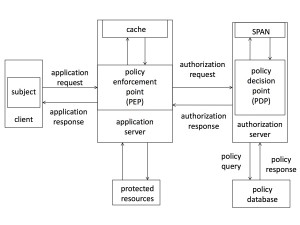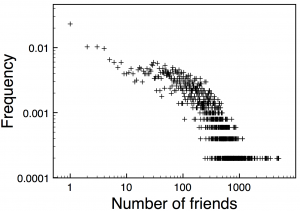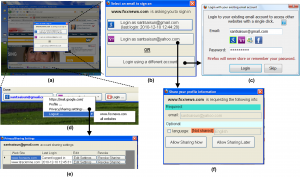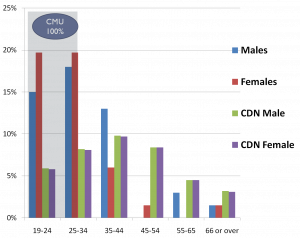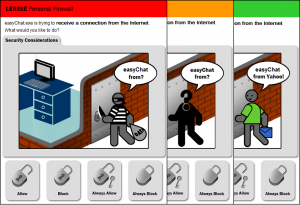Performance overhead due to the authorization delays can be reduced if the access control decisions are pre-computed beforehand and placed into the cache of the policy enforcement point (PEP). LERSSE alumni Pranab Kini has explored the design space for speculative authorizations. A journal version of his thesis has been recently published IEEE Transactions on Parallel and Distributed Systems.
Independent Panel on Internet Voting in British Columbia
 I’ve been invited to serve on the independent panel on Internet voting appointed by Elections B.C.. Other members of the panel are Keith Archer (chair), Chief electoral officer; Lee-Ann Crane, chief administrative officer for the East Kootenay Regional District; Valerie King, professor in the department of computer science at the University of Victoria; and George Morfitt, former auditor general of B.C.
I’ve been invited to serve on the independent panel on Internet voting appointed by Elections B.C.. Other members of the panel are Keith Archer (chair), Chief electoral officer; Lee-Ann Crane, chief administrative officer for the East Kootenay Regional District; Valerie King, professor in the department of computer science at the University of Victoria; and George Morfitt, former auditor general of B.C.
Additional information is available in the corresponding press release.
The Devil is in (Implementation) Details
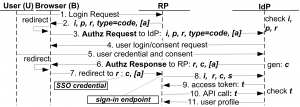 It’s hard to get a security protocol right. It seems even harder to get its implementations right, even more so when millions use it on daily basis. LERSSE’s Sun-Tsai will present at ACM CCS this October several critical vulnerabilities he has uncovered in implementation of OAuth 2.0, used by Facebook, Microsoft, Google, and many other identity providers and relying parties. These vulnerabilities allow an attacker to gain unauthorized access to the victim user’s profile and social graph, and impersonate the victim on the RP website. Continue reading
It’s hard to get a security protocol right. It seems even harder to get its implementations right, even more so when millions use it on daily basis. LERSSE’s Sun-Tsai will present at ACM CCS this October several critical vulnerabilities he has uncovered in implementation of OAuth 2.0, used by Facebook, Microsoft, Google, and many other identity providers and relying parties. These vulnerabilities allow an attacker to gain unauthorized access to the victim user’s profile and social graph, and impersonate the victim on the RP website. Continue reading
Systematically breaking and fixing OpenID security
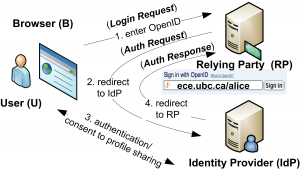 Do you use OpenID? I bet you do, even if you don’t know this. OpenID 2.0 is a user-centric Web single sign-on protocol with over one billion OpenID-enabled user accounts, and tens of thousands of supporting websites. Well, the security of this protocol is clearly critical! Yet, its security analysis has only been done so far in a partial and ad-hoc manner. LERSSE Ph.D. candidate San-Tsai Sun performed a systematic analysis of the protocol using both formal model checking and an empirical evaluation of 132 popular websites that support OpenID. Continue reading
Do you use OpenID? I bet you do, even if you don’t know this. OpenID 2.0 is a user-centric Web single sign-on protocol with over one billion OpenID-enabled user accounts, and tens of thousands of supporting websites. Well, the security of this protocol is clearly critical! Yet, its security analysis has only been done so far in a partial and ad-hoc manner. LERSSE Ph.D. candidate San-Tsai Sun performed a systematic analysis of the protocol using both formal model checking and an empirical evaluation of 132 popular websites that support OpenID. Continue reading
On vulnerability of Facebook users to social botnets
Towards Usable Web Single Sign-On
OpenID is an open and promising Web single sign-on (SSO) solution. The research led by my Ph.D. student San-Tsai Sun investigates the challenges and concerns web users face when using OpenID for authentication, and identifies what changes in the login flow could improve the users’ experience and adoption incentives. Continue reading
The Lab Study Troubles
Can real behavior of users, when it comes to security decisions, be observed in lab studies? A recent paper from my research group sheds light on this question.
Initially, our goal was quite different. We replicated and extended a 2008 study conducted at CMU that investigated the e effectiveness of SSL warnings. To achieve better ecological validity, we adjusted the experimental design: allowing participants to use their web browser of choice and recruiting a more representative user sample.
Can Metaphors of Physiscal Security Work for Computers?
There is evidence that the communication of security risks to home computer users has been unsuccessful. Prior research has found that users do not heed risk communications, that they do not read security warning texts, and that they ignore them. Risk communication should convey the basic facts relevant to the warning recipient’s decision. In the warning science literature, one successful technique for characterizing and designing risk communication is to employ the mental models approach, which is a decision-analytic framework. With this approach, the design of risk communication is based on the recipients’ mental model(s). The goal of the framework is to help people make decisions by providing risk communication that improves the recipients’ mental models in one of three ways: (1) adding missing knowledge, (2) restructuring the person’s knowledge when it inappropriately focussed (i.e., too general or too narrow), and (3) removing misconceptions.
Heuristics for Evaluating IT Security Management Tools
 The usability of IT security management (ITSM) tools is hard to evaluate by regular methods, making heuristic evaluation attractive. However, standard usability heuristics (e.g., Nielsen’s) are hard to apply, as IT security management occurs within a complex and collaborative context that involves diverse stakeholders. In a joint project with CA Technologies, my Ph.D. student Pooya Jaferian has proposed a set of ITSM usability heuristics that are based on activity theory, are supported by prior research, and consider the complex and cooperative nature of security management. The paper reporting the evaluation of the heuristics received Best Paper Award at SOUPS ’11.
The usability of IT security management (ITSM) tools is hard to evaluate by regular methods, making heuristic evaluation attractive. However, standard usability heuristics (e.g., Nielsen’s) are hard to apply, as IT security management occurs within a complex and collaborative context that involves diverse stakeholders. In a joint project with CA Technologies, my Ph.D. student Pooya Jaferian has proposed a set of ITSM usability heuristics that are based on activity theory, are supported by prior research, and consider the complex and cooperative nature of security management. The paper reporting the evaluation of the heuristics received Best Paper Award at SOUPS ’11.
Have users signed up?
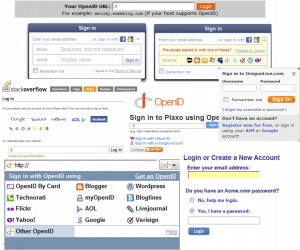 I participated in a panel “Password Managers, Single Sign-On, Federated ID: Have users signed up?” at Workshop on The Future of User Authentication and Authorization on the Web: Challenges in Current Practice, New Threats, and Research Directions, which was collocated with the conference on Financial Cryptography and Data Security. In my panel presentation, I showed the most recent results of the evaluation of OpenID authentication experience by participants, conducted in my lab, which shed some light on why users have not signed up, at least for OpenID. An apparent reluctance among the end users of employing OpenID, despite the fact that there are over one billion OpenId-enabled accounts, results from technical, business, and human factors. This particular short presentation was devoted to the usability factors.
I participated in a panel “Password Managers, Single Sign-On, Federated ID: Have users signed up?” at Workshop on The Future of User Authentication and Authorization on the Web: Challenges in Current Practice, New Threats, and Research Directions, which was collocated with the conference on Financial Cryptography and Data Security. In my panel presentation, I showed the most recent results of the evaluation of OpenID authentication experience by participants, conducted in my lab, which shed some light on why users have not signed up, at least for OpenID. An apparent reluctance among the end users of employing OpenID, despite the fact that there are over one billion OpenId-enabled accounts, results from technical, business, and human factors. This particular short presentation was devoted to the usability factors.
